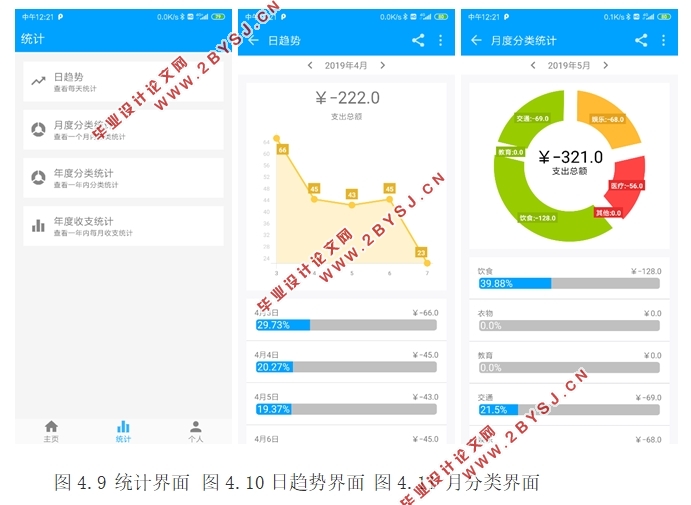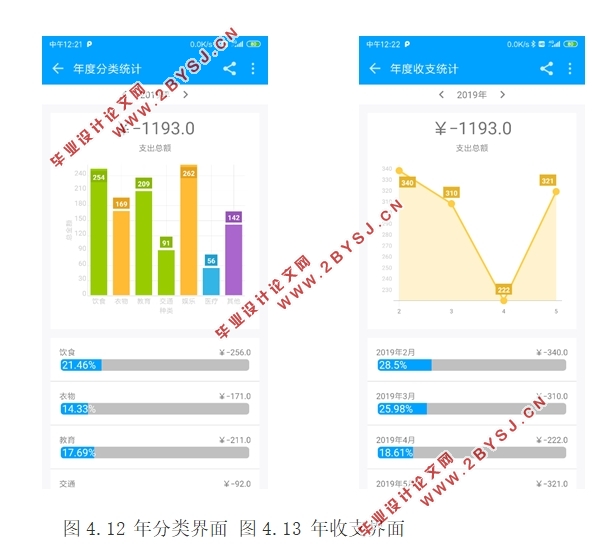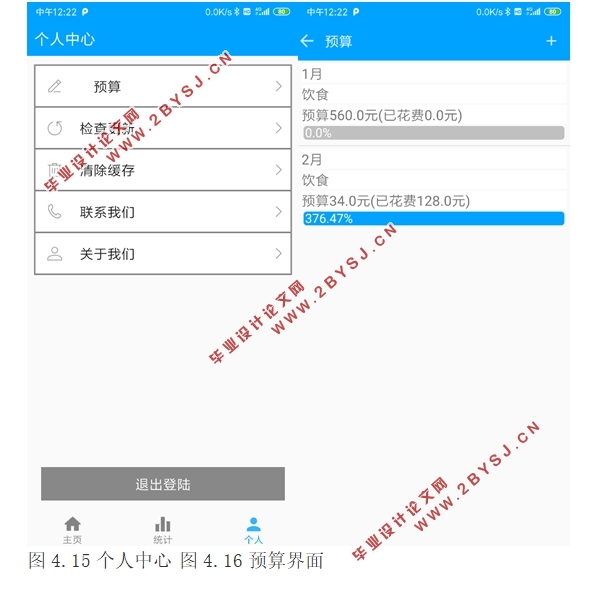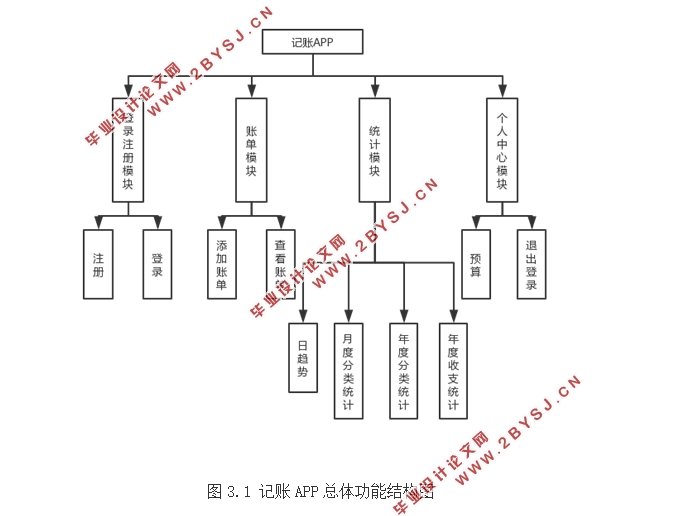基于安卓Android的记账本应用设计与开发
无需注册登录,支付后按照提示操作即可获取该资料.
基于安卓Android的记账本应用设计与开发(任务书,开题报告,文献摘要,论文说明书11000字,程序代码)
摘要
从记账诞生以来,人们总是用当下最先进快捷的技术进行记账工作。从古时候用记忆记账到后来手写记录账本,然后进入信息时代,人们开始使用计算机这一强大的工具进行记账工作,然而计算机记账有着时间和空间的局限性。随着近些年来手机的迅猛发展,一款能够随时随地记账的APP显然是不可或缺的。
本APP有着以下几点主要内容:
1. 登录注册功能,能够防止他人查看自己的账户。
2. 主页的账单功能能够展示最近的账单简略信息并且点进去能查看详细信息,当然还有添加账单的功能。
3. 统计模块能够将数据进行一定的处理,在通过图表的方式展示出来,让你一目了然,有着直观的感受。
4. 最后的个人中心能够添加预算,控制自己的消费。
本APP简单,便捷,可以实时记录自己的消费情况,不用受平台限制。本文对记账APP展开需求分析,然后是总体的设计以及功能模块的实现。经过测试,本APP有着简单,实用的特点。
关键词:Android;记账;APP
Abstract
Since the birth of accounting, people always use the most advanced and fast technology to do the accounting work. From ancient times, people began to use the powerful tool of computer to record books by memory, and then entered the information age. However, computer accounting has limitations in time and space. With the rapid development of mobile phones in recent years, an APP that can record at any time and anywhere is obviously indispensable.
This APP has the function of login and registration, which can prevent others from checking their accounts. The billing function of the home page can display the latest billing brief information and click in to see the details, of course, there is the function of adding bills. Statistical module can process the data to a certain extent, and display it in the form of charts, so that you can see it at a glance and have an intuitive feeling. Finally, personal centers can add budgets and control their own consumption.
This APP is simple and convenient. It can record its consumption in real time without platform restriction. In this paper, the demand analysis of Accounting APP is carried out, followed by the overall design and the realization of functional modules. After testing, this APP has the characteristics of simplicity and practicability.
Key Words:Android;Accounting;APP




目录
摘 要 I
Abstract II
第1章 绪论 1
1.1 项目背景及意义 1
1.2 国内外研究现状 2
1.3 相关技术 2
1.3.1 Android 简介 2
1.3.2 JAVA语言 3
1.3 设计进度安排 3
第2章 需求分析 5
2.1 登录注册模块 5
2.2 账单模块 6
2.3 统计模块 6
2.4 个人中心模块 7
第3章 总体设计 9
3.1 系统总体设计 9
3.2 系统模块划分 9
3.3 数据库设计 10
第4章 功能设计与实现 11
4.1 登录注册功能实现 11
4.1.1 登录注册模块流程分析 11
4.1.2 登录注册模块功能代码 12
4.1.3 登录注册模块效果展示 13
4.2 账单功能实现 14
4.2.1 账单模块流程分析 14
4.2.2 账单模块功能代码 15
4.2.3 账单模块效果展示 17
4.3 统计功能实现 18
4.3.1 统计模块流程分析 18
4.3.2 统计模块功能代码 19
4.3.3 统计模块效果展示 21
4.4 个人中心功能实现 23
4.4.1 个人中心模块流程分析 23
4.4.2 个人中心模块功能代码 23
4.4.3 个人中心模块效果展示 24
第5章 系统测试 26
5.1 测试步骤 26
5.2 兼容性测试 26
5.3 功能性测试 26
第6章 总结与展望 29
6.1 总结 29
6.2 展望 29
参考文献 31
致谢 32
